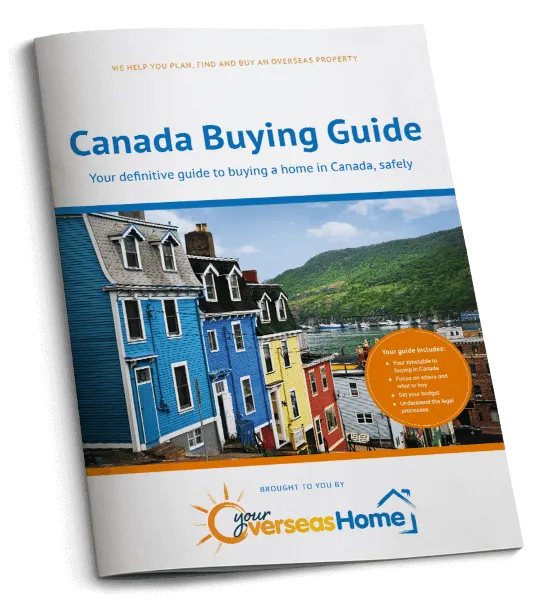Quebec is a popular part of Canada for immigrants, with the bustling city of Montreal a particular draw. Historic Quebec City itself offers a more ‘European’ lifestyle (just surrounded by very North American majestic nature). Getting a working visa for Quebec is a different process to the rest of Canada. Nonetheless, if you follow the steps below, it’ll be easy to navigate.
Quebec-selected skilled workers
Quebec selects its own workers independently of Canada. If you’re not intending to live in Quebec, read our advice on immigrating to the rest of Canada. To apply for a working visa for Quebec, you’ll need to follow two main processes.
- Selection: Firstly, you’ll apply to the Quebec provincial government for a certificate showing they’ve selected you.
- Admission: Then, you’ll apply to the federal agency Immigration, Refugees and Citizenship Canada to become a Permanent Resident of Canada.
In other words, the Quebec government is responsible for selecting you as an immigrant. However, the Canadian federal government is responsible for admitting you onto Canadian territory. Having passed the first step doesn’t technically guarantee the second (although it’d be rare to fail).
The Quebec government is responsible for selecting you as an immigrant. However, the Canadian federal government is responsible for admitting you onto Canadian territory.
Selection by Quebec
The first step is to be selected by the provincial government for a working visa for Quebec. As with most immigration systems, they select applicants based on a points-scoring system. You will be scored out of 103 if you’re single. If you have a spouse, you’ll be scored out of 120. The points are allocated as follows.
- Education: 26 points
- Work experience: 8 points
- Age: 16 points
- Knowledge of French: 16 points
- Knowledge of English: 6 points
- Time spent in Quebec: 5 points
- Family in Quebec: 3 points
- Spouse’s education, age, language knowledge: 17 points
- Validated job offer: 14 points
- Children: 8 points
- Financial independence: 1
Application process
First, you’ll need to create a profile on ARRIMA, the government portal. You’ll need to make a declaration of interest (déclaration d’intérêt, DI). This will include all of the information stated above. The system will store it on the online Banque des déclarations d’intérêt, where you can modify it at any point.
If you work in a regulated profession such as nursing, you’ll likely need to provide information of the equivalence of your qualifications. This comes under the authority of the regulating body for your profession and not the Quebec government. As such, make sure to contact them as early as possible, to avoid hold-ups.
If your profile corresponds to what the Ministry is looking for, they’ll invite you to make an application for permanent selection (demande de sélection permanente). The criteria they’ll select you on is ‘human capital’ (age, education, knowledge of French), your ability to integrate into Quebec and your ability to respond to market needs (eg you possess a skill in demand).

Getting a working visa for Quebec means following different steps to the rest of Canada. AnjelikaGR / Shutterstock.com
Making a demande de sélection permanente
Once you’re invited, you’ll need to add some extra details to your profile in Mon project Québec. The system will autocomplete from your DI, but you should also add your profession, your place of residence and any visits or family in Quebec. You’ll need to do this within 90 days.
You’ll also receive a list of required documents from the Ministry. This is personalised for each applicant. These must be in the required format (format exigé). In general, if you are submitting documents in English, you don’t need to translate them to French. If you do translate documents, you must use a registered translator.
Getting a ‘Certificate of Selection’
There are two ways your application the authorities will accept your application. Firstly, if it meets all requirements, they may accept without any further processes. This is known as sélection sur dossier (selection by file). You’ll receive by post a Certificate of Selection (Certificat de sélection du Québec, CSQ), plus information on the next steps for a working visa for Quebec.
If further information is required, you may receive an invitation to interview (convocation à une entrevue). The immigration advisor will go through your application and verify all parts of it. S/he will focus particularly on education, work experience and linguistic knowledge. If it goes well, s/he may immediately give you your Certificate of Selection (Certificat de sélection du Québec, CSQ), or may send it by post.
Either way, congratulations! You’ve passed the provincial stage and are now onto getting Permanent Residency in Canada.
Once you know you’re moving to Canada with your CSQ, make sure to think about how you’ll protect your budget. Find out how to lock in an exchange rate in the free Property Buyer’s Guide to Currency.
Admission by the federal government
The final step here is to apply for Permanent Residency from the Canadian government. You’ll then need to fill in the application package, including giving your biometrics. This includes a police certificate, a Declaration of Intent to Reside in Quebec, information about your background, family and travels. When you’ve completed and signed the package, post it to the address below. Do not send it to any other immigration processing centre – even though this one is in Nova Scotia, it’s the only one dealing with Quebec-selected workers.
|
Quebec Skilled Workers |
CTD-Sydney C.P. 8888 Sydney (N.-É.) B1P 0C9 Canada |
You’ll also need to pay application fees, typically around CAN$1,040-1,500. An additional Right of Permanent Residence Fee (RPRF) is due after the acceptance of your application. This is around CAN$490.
Arriving in Quebec
When you arrive, make sure to bring your usual passport, your permanent resident visa and your Confirmation of Permanent Residence (COPR). Also bring proof of your funds to show you can support yourself and your family. You’ll have an interview with an Immigration Officer, who will check that you still meet all the eligibility requirements.
If you arrive with more than CAN$10,000 on you, you must tell the officer interviewing you.
That’s the end of the formalities for your working visa for Canada! Your new life awaits you.

The Canada Buying Guide takes you through each stage of the property buying process, with practical recommendations from our experts who have been through the process themselves. The guide will help you to:






